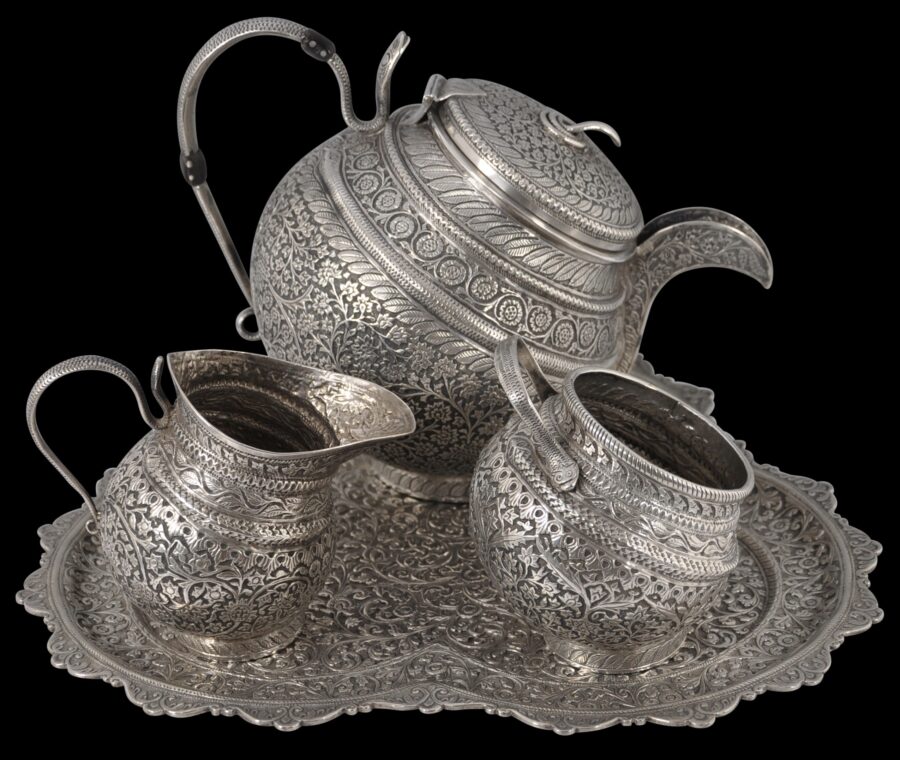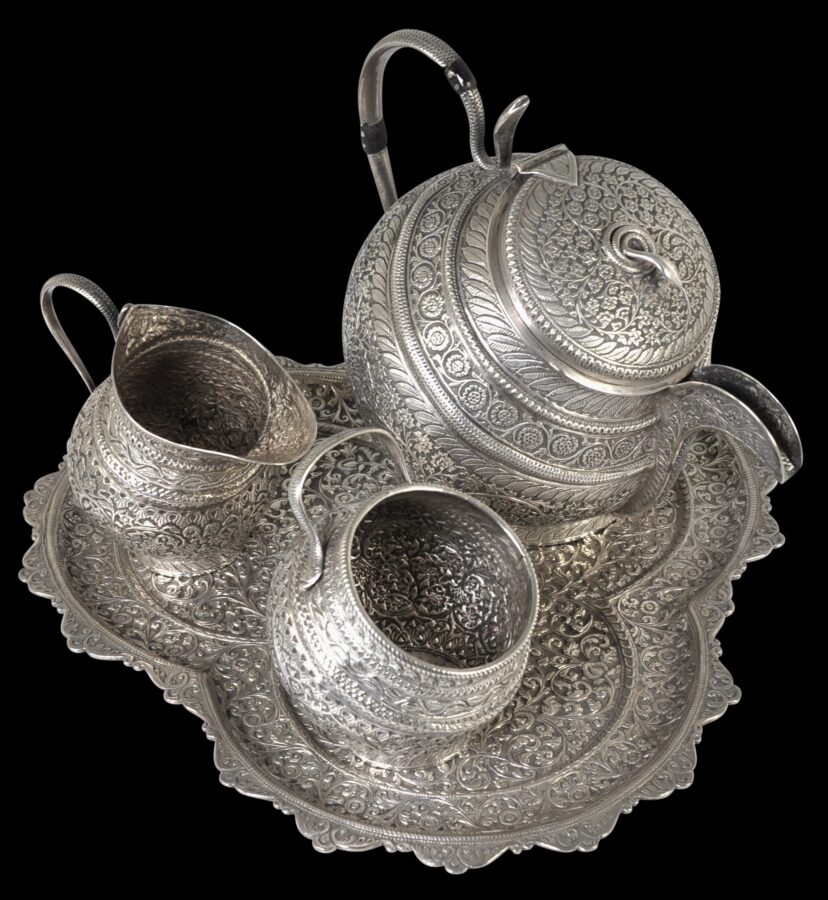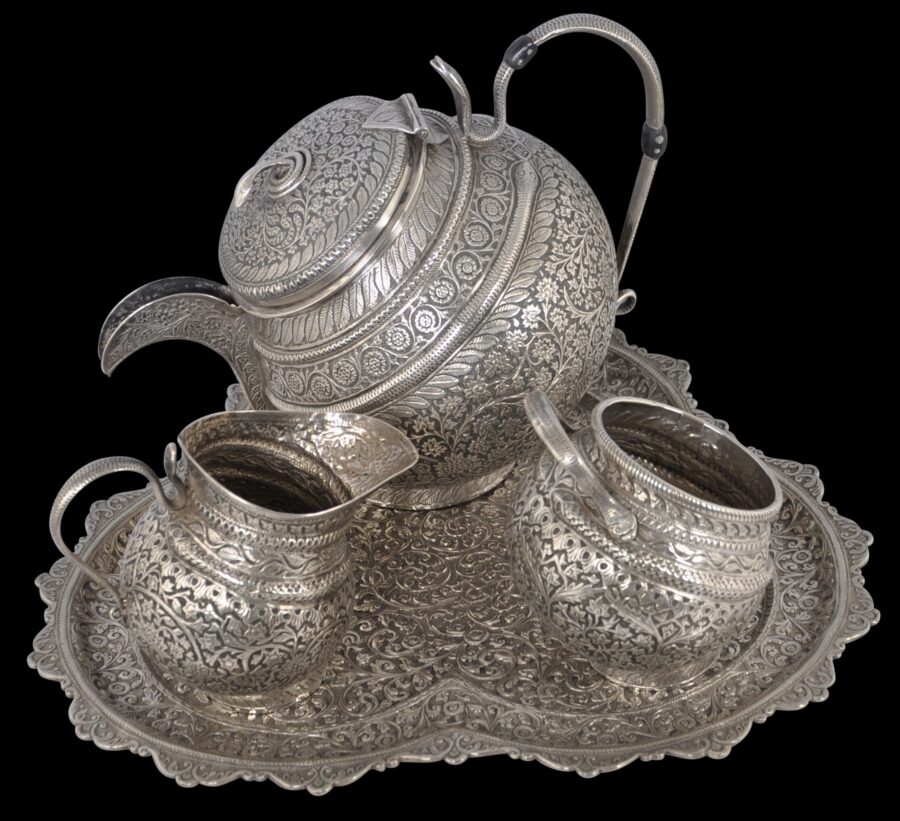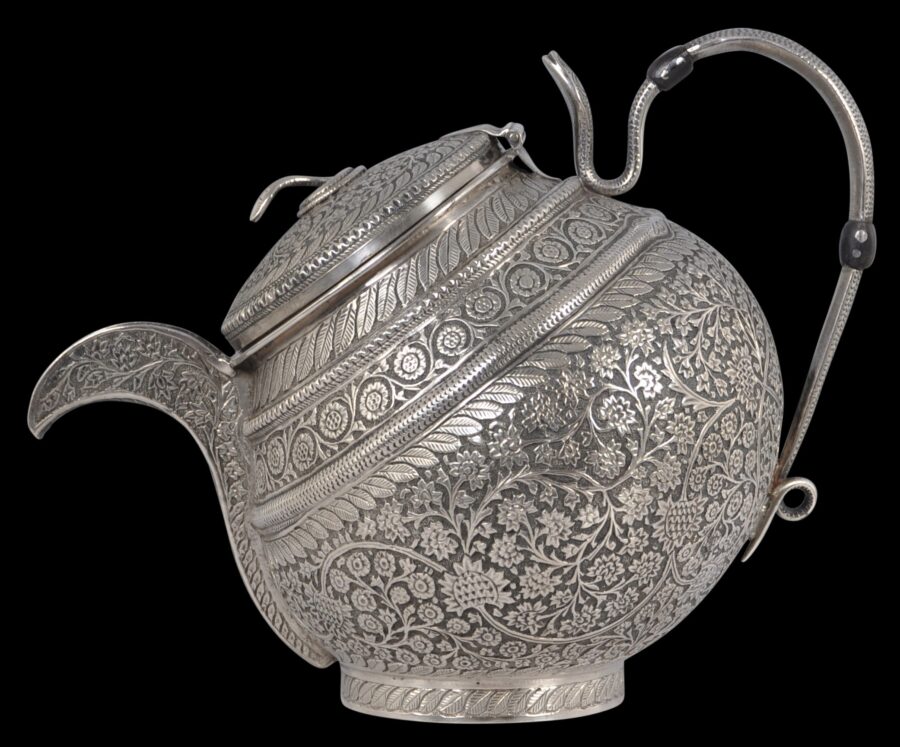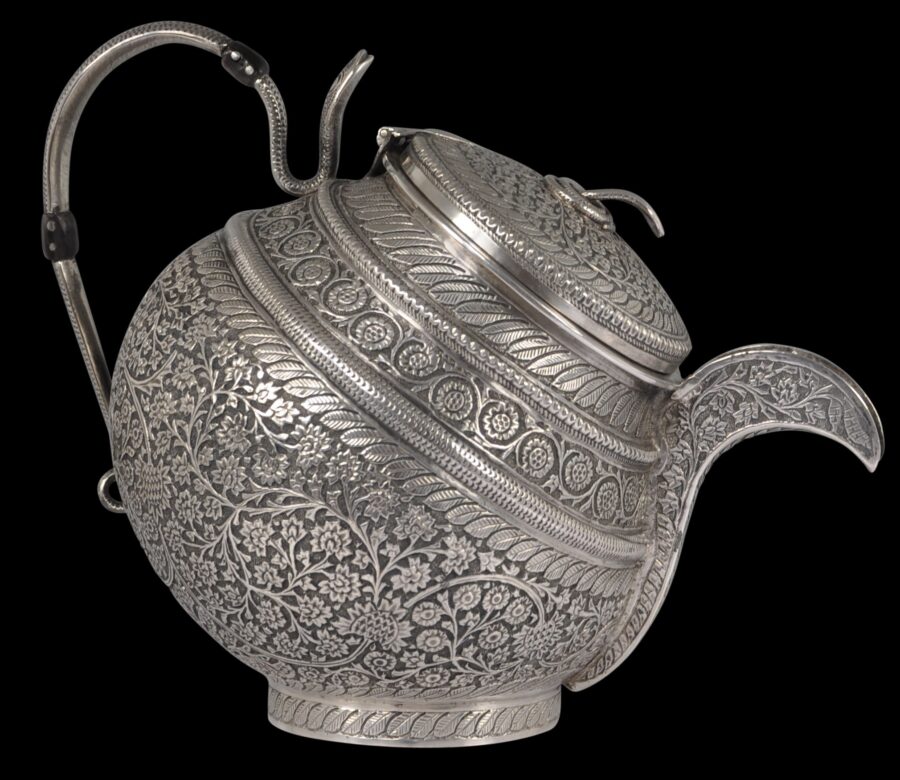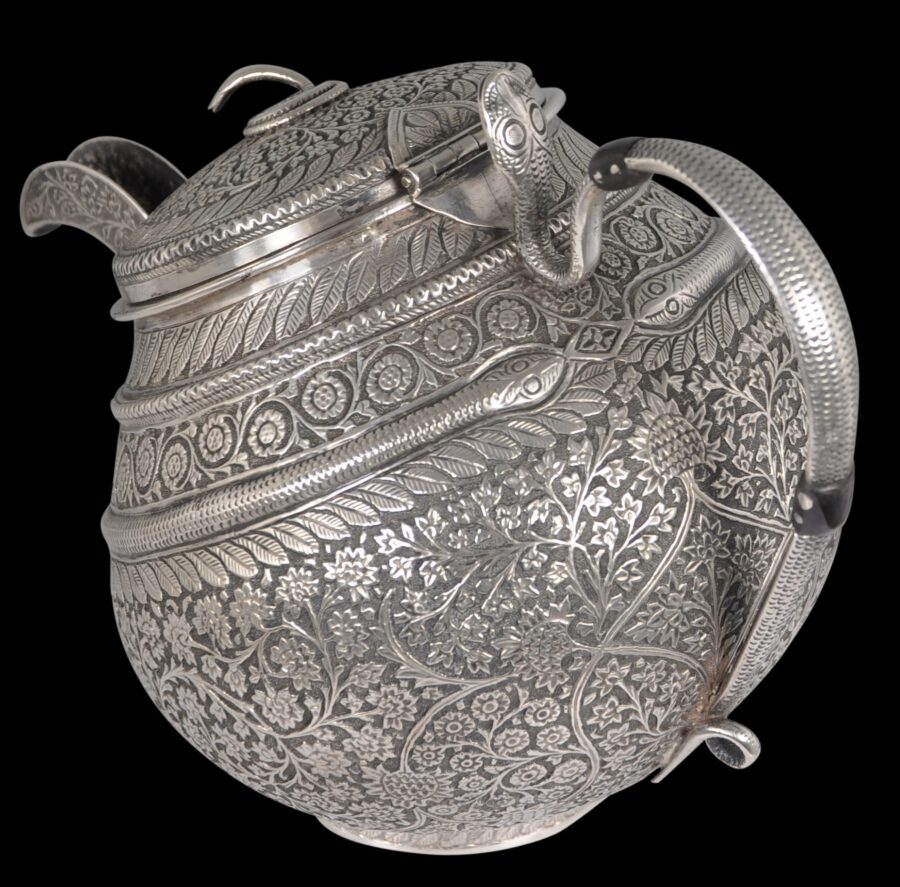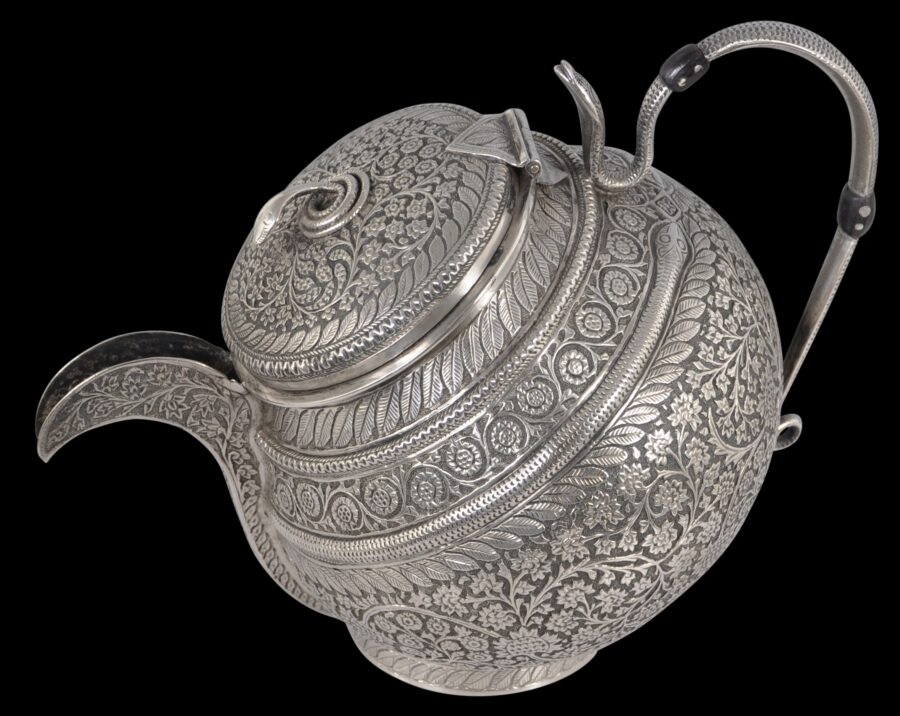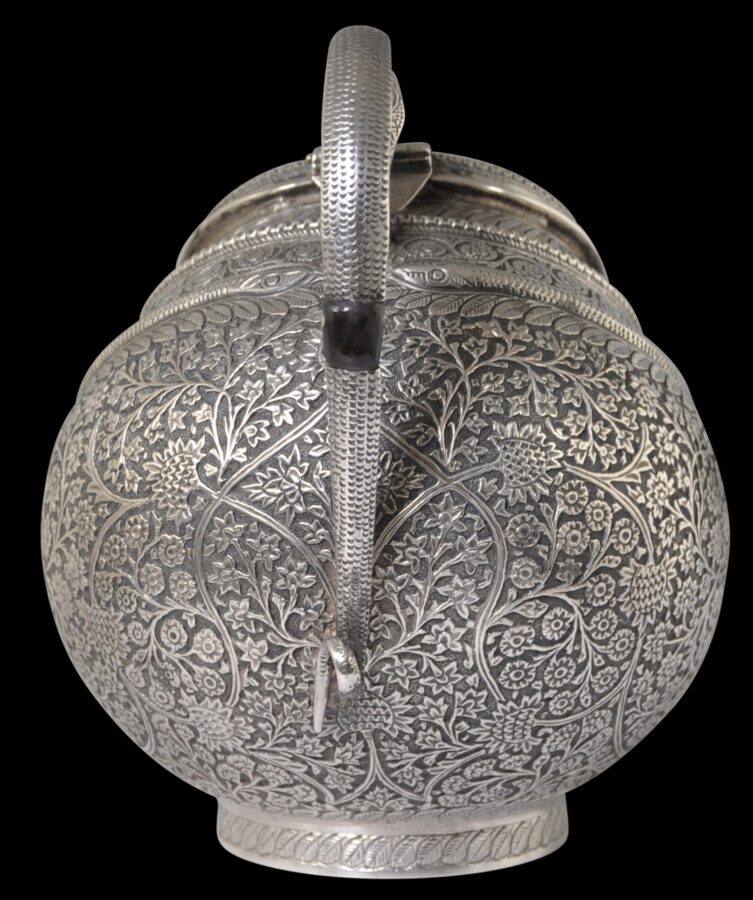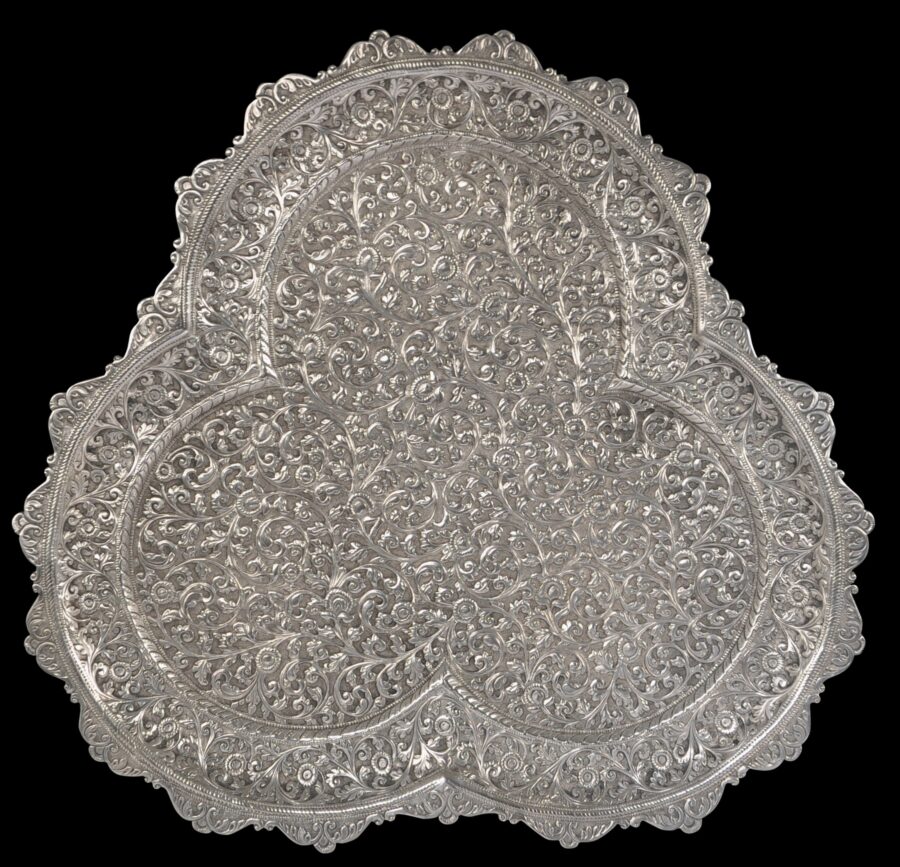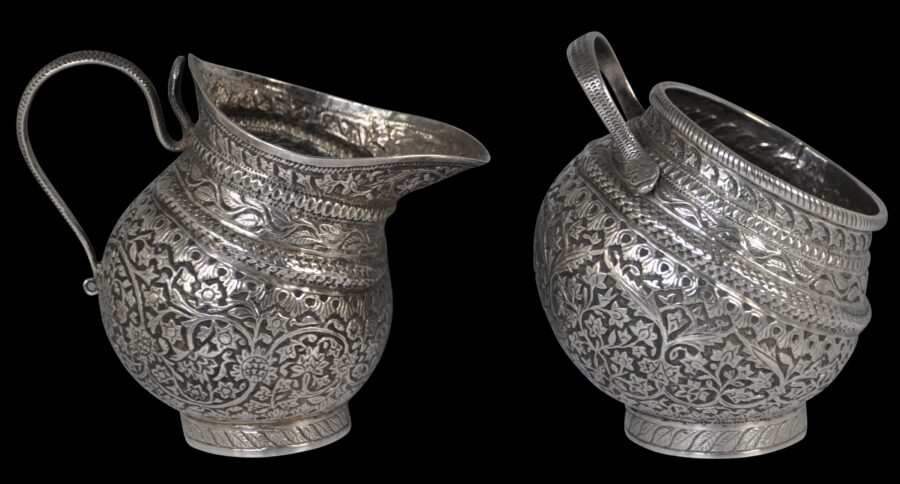Each component of this three-piece tea set is based on the form of a kang or kangri, a traditional tilting earthenware vessel used to store rainwater and which had a tilt to allow a ladle to more readily access the water.
The set here is unusually large and the teapot is among the largest kang-style tea pots we have seen.
Kashmir was unique in colonial India for producing items in silver based on mundane or utilitarian household objects and elevating them into items of luxury such as silver teaware.
The tea set comprises a teapot, a sugar bowl and a milk jug. The teapot has horn insulators in the handle.
Each is decorated with what became known in Kashmir as the ‘rosette’ pattern, infilled with coriander leaf and flower motifs. Each has handles modelled as snakes. The teapot has a curled snake as a lid finial.
The set is accompanied by a tri-lobed tray which pairs with the set perfectly in terms of size. The tray is from Kutch and possibly was paired with the set by a retailer in colonial India.
The tea set is in excellent condition and is without dents, splits or repairs.
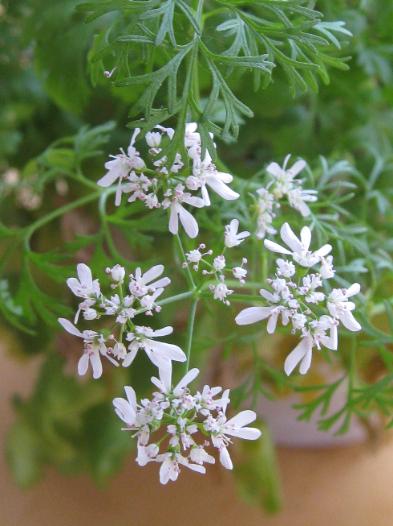
Above: The flowers and fine leaves of the coriander plant, a motif used in Kashmiri silver and extensively on this tea set.
References
Dehejia, V., Delight in Design: Indian Silver for the Raj, Mapin, 2008.
Wilkinson, W.R.T., Indian Silver 1858-1947, 1999.


